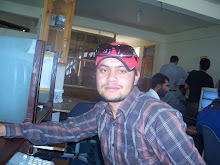 As much as the valley is famous for its beauty, the people of Hunza are noted for their friendliness and hospitality. The local languages spoken are Burushaski, Wakhi and Shina, many people understand Urdu. The literacy rate of the Hunza valley is believed to be more than 90%. Virtually every child of the new generation studies up to at least high school level. Many pursue higher studies from prestigious colleges and Universities of Pakistan and abroad.
As much as the valley is famous for its beauty, the people of Hunza are noted for their friendliness and hospitality. The local languages spoken are Burushaski, Wakhi and Shina, many people understand Urdu. The literacy rate of the Hunza valley is believed to be more than 90%. Virtually every child of the new generation studies up to at least high school level. Many pursue higher studies from prestigious colleges and Universities of Pakistan and abroad.Most of the people of Hunza are Ismaili Shia Muslims, followers of His Highness Prince Karim Aga Khan IV, while in Ganish Village more than 90% are Shia Muslims. The Hunza region is home to people of three ethnicities:
* The Lower Hunza area - (from khizerabad to Nasirabad is mainly inhabited by the Shinaki people who are Shina speakers;
* The Central Hunza area - (from Murtazaabad to Ahmed Abad) is mainly inhabited by Burushaski speakers.
* The Upper Hunza area, known as Gojal - (from Shiskat to Khunjerab is mainly populated by Wakhi speakers;
The majority of the people are Ismaili Shia Muslims who are followers of the Aga Khan. The present Aga Khan IV has provided a lot of funding for the area to help with agriculture and the local economy through the Aga Khan Development Network.
 Hunza valley consists of many small villages. The first village is Khizerabad. The people of the Hunza valley had an amazing average lifespan of 160 prior to the early 20th century. This group of people were highly associated with nature, especially regarding dieting habits and lifestyle. They highly acknowledged the apricot seed, using it as currency. The women would squeeze out the liquid of the seeds, and spread it over their foreheads, eliminating their wrinkles even at an extraordinary age. Unfortunately with more contact to the outside world, the Hunzus' average lifespan increasingly dropped, due to different ideas and lifestyle their group was obtaining from other peoples. The Hunzu valley is frequently referred to as Shangri La, and is also known as "The Valley Where you Live Forever"
Hunza valley consists of many small villages. The first village is Khizerabad. The people of the Hunza valley had an amazing average lifespan of 160 prior to the early 20th century. This group of people were highly associated with nature, especially regarding dieting habits and lifestyle. They highly acknowledged the apricot seed, using it as currency. The women would squeeze out the liquid of the seeds, and spread it over their foreheads, eliminating their wrinkles even at an extraordinary age. Unfortunately with more contact to the outside world, the Hunzus' average lifespan increasingly dropped, due to different ideas and lifestyle their group was obtaining from other peoples. The Hunzu valley is frequently referred to as Shangri La, and is also known as "The Valley Where you Live Forever"
No comments:
Post a Comment